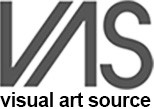The art of James Drake lives in the borderlands. This is not just because so much of his work of the past 40 years has been inspired, in theme and content, by Drake’s time living along the US/Mexican border in El Paso, Texas. The borderlands are not just an imaginary line draw in the earth between two countries. Borders appear between people: where bodies meet, where skin touches. They appear in ecosystems: where a wetland turns back into desert. They occur in our own minds: where two ideas encounter and resist one another. Borders arise along lines of tension, the places where desires meet.
Que Linda la Brisa (How Lovely the Breeze) is an exhibition of James Drake’s drawings focused on the human figure. The majority of the pieces in the exhibition are a new interpretation of Drake’s photo-series of twenty years ago which focused on the population of transgender sex workers who live and work in Ciudad Juárez on the border across from El Paso.
Drake, who had long worked in Juárez, was introduced to this community through a charity he was connected with. Over four years, Drake traveled across the border to meet these women, talking with them, learning about their daily lives and routines, photographing and filming them. Up to that time, Drake had worked in several mediums: sculpture, installations, drawing – but he had never used photography or video. Because of its immediacy, photography seemed the best way to capture the lives and environment of these women.
He developed a pattern – traveling into Juárez, meeting up with some of the women, photographing them at their homes or at the local bar, La Brisa where they often met to read poetry. He always paid them for their time, and over the years got to know many of them, and their stories, quite well. The women, Drake says, had come from all over Mexico to Juárez, escaping families and towns where they were not accepted for who they were. At the border there was better chance of steady work, with patrons coming not just from the Mexico side, but from the US as well.
Drake’s work records, with raw, intense fragility, the dreams and desires of these women, who by and large all craved a very traditional dream: husband, family, children – the small home with a white picket fence. Although they all identified clearly as women, most of them would never have the money or opportunity to get surgery or hormone treatment. Though some did, over the years, turn to quacks offering back-alley surgeries – with disastrous and scarring results.
Drake’s series of photographs was shown widely, including at the 2000 Whitney Biennial. At the time gallery owners or critics often asked why he didn’t focus on the women’s work or sex lives, but for Drake the true pull was to their full humanity and daily life, the way their dreams and understanding of their own gender beat up against cultural, economic, and physical walls. In 2000, a small book (Que Linda la Brisa) of Drake’s photos was published, along with poetry by Benjamin Alire Sáenz and Jimmy Santiago Baca.
The drawings included in this exhibition seem to have grown out of this merging of images and words. Drake explores the classical subject of life-drawing, the naked human figure, in the light of this borderland between male and female. Some of the photographic images, adapted and reinterpreted, are also included within the drawings, along with words and lines from Drake’s own poetry.
Drake has long had a strong connection to literature and poetry, along with friendships among contemporary writers. Drake feels that literature and music have likely influenced him just as much as the visual arts, over the years. After all, with all three, he says, the viewer/reader/listener is conjuring up images within their own mind. Despite his love of poetry, and having written himself for years, this is one of the first times that his own words will be included with his artwork.
Like poetry, the work that Drake brings to Que Linda la Brisa is visually layered – each image, each word, taking on a multiplicity of shades, rich with meaning. Male/Female. Mexican/American. Seen/Unseen. Drake’s work itself becomes a borderland where these seeming opposites meet, dance together, bleed through one another, and blossom with a thousand inflections and complexities.



